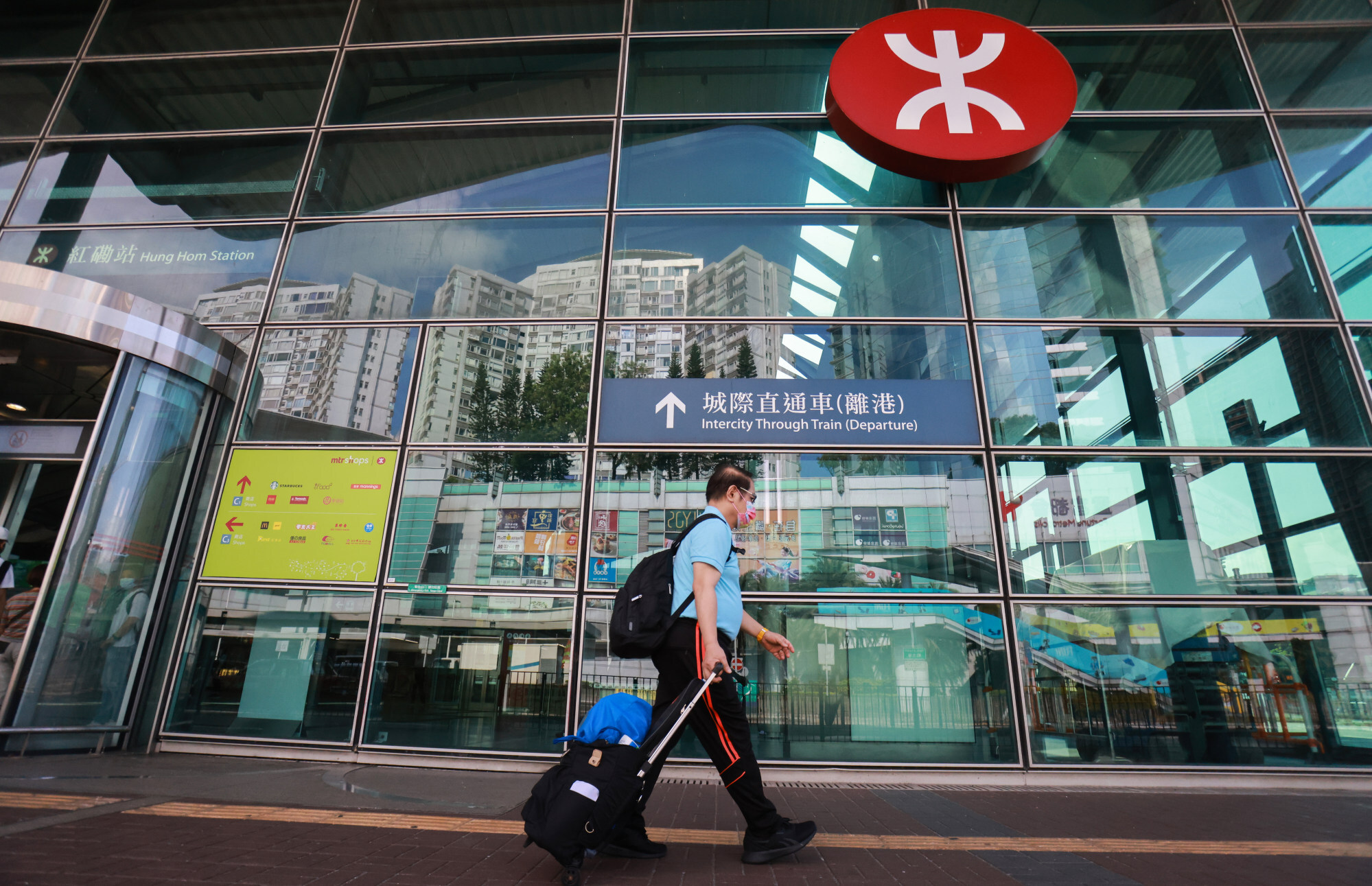
‘End of an era’ for Hong Kong MTR’s cross-border through-train services with Guangzhou, Beijing, Shanghai
- Falling demand and strong competition from other modes of transport, especially high-speed rail link, signal end of service after more than 110 years of operation
- Rail giant has not confirmed news of termination from sources, but says headcount will be transferred to other positions and stations
Hong Kong’s historic cross-border intercity through-train services with Guangzhou, Beijing and Shanghai will be axed, according to sources familiar with the situation.
Following dwindling demand and fierce competition from other modes of transport, especially the 26km local section of the Guangzhou-Shenzhen-Hong Kong high-speed railway, through-train operations will come to an end after more than 110 years of operation.
In a reply to Post inquiries, rail giant the MTR Corporation issued a statement late on Thursday that did not confirm or deny press reports that service termination was on the cards.
Hong Kong’s MTR Corp set to freeze ticket prices this year, fare rebate extended
But it stressed it had not laid off or cut any manpower from through-train services, saying headcounts were transferred to other positions such as other stations, border services at Lo Wu and the East Rail line extension across Victoria Harbour.
The through trains were suspended at the onset of the Covid-19 pandemic in January 2020 along with the closure of all but three border checkpoints.
“Due to the availability of more positions on local rail lines, we want to help those who used to work with intercity train services to look for other opportunities,” it said.
The intercity service was first introduced in 1911 but was disrupted during the 1937-45 Sino-Japanese war. After the war ended, normal services resumed only to be disrupted again and then suspended altogether when the Communists assumed power in mainland China in 1949, with passengers required to change trains at the border and walk the 275 metres (300 yards) between the Lo Wu and Shum Chun (now Shenzhen) terminals.
In 1979, the through trains resumed shortly after a historic meeting between then Hong Kong governor Murray MacLehose and paramount leader Deng Xiaoping in Beijing.
It had since served as a land gateway for cross-border travellers especially businessmen between Hong Kong and Guangzhou and played a key role in Shenzhen’s opening since the 1980s.

A trip between the Hung Hom terminus and Guangzhou East station through Changping city used to take about two hours. The through trains were subsequently extended to Beijing and Shanghai through connecting with the mainland’s extensive rail networks.
Since the merger of the MTR Corp and Kowloon-Canton Railway Corporation (KCRC) in 2007, the through trains were jointly run by the MTR and the mainland’s China State Railway Group.
In recent years, the service faced strong competition from other modes of transport such as cross-border boundary buses, high-speed rail and taxis. The high-speed train, for example, took 48 to 71 minutes between Hong Kong and Guangzhou South station when it started operating in September 2018. But operations of the high-speed trains have also been suspended since the beginning of the pandemic.
Hong Kong’s MTR Corp to reduce frequency of some services from Friday
Lawmaker and former KCRC chairman Michael Tien Puk-sun said it would make sense to terminate through-train services before the border reopened.
“I am not sure about the timing of the termination, but it will be logical if it takes place before the border is reopened to avoid the hassles of mobilising manpower back and forth,” he said.
He pointed out that an extension of high-speed rail services to Guangzhou East railway station, which is close to the Guangdong provincial capital’s shopping and financial centre, will replace the niche of the through trains.
He said the through-train capacity at Hung Hom should be redesignated for the East Rail line that would be extended across Victoria Harbour through the Sha Tin to Central rail link. The mega rail link – Hong Kong’s most expensive project of its kind costing HK$90.7 billion – is due to begin operating on May 15, pending the government’s approval, according to Tien.

Hong Kong Federation of Railway Trade Unions chairman Lam Wai-keung estimated fewer than 100 staff were employed on through-train services, because drivers worked on both East Rail line and the cross-border services and repairs were carried out at the Ho Tung Lau depot in Fo Tan. The East Rail connects Lo Wu and Lok Ma Chau at the border with Hung Hom in Kowloon.
Repair and maintenance of the MTR’s only train set for the cross-border service, a double-deck 184-seater called KTT, was stopped several months ago, Tam said.
“I am aware that repair and maintenance of that train was stopped and we didn’t order any spares,” he said.
In 2019, intercity through trains recorded a patronage of 1.9 million, down 48.2 per cent from a year earlier while that for high-speed trains jumped 219.2 per cent to 16.9 million, according to the MTR’s annual report.
Revenue of the through trains shrank 18.2 per cent to HK$175 million while that of high-speed rail services surged 249.7 per cent to HK$2.09 billion.

